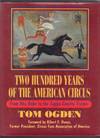
The Development of the Frog's Egg: An Introduction to Experimental Embryology
by Morgan, Thomas Hunt
- Used
- Hardcover
- first
- Condition
- See description
- Seller
-
North Garden, Virginia, United States
Payment Methods Accepted
About This Item
New York: The Macmillan Co., 1897. First edition, first printing. 1897
FIRST EDITION OF NOBEL LAUREATE T.H. MORGAN'S FIRST BOOK--THE FIRST WORK IN ENGLISH ON EXPERIMENTAL EMBRYOLOGY.
9 inches tall hardcover, green cloth binding, blindstamped covers, gilt title to spine, xi, 192 pp; 51 figs, bibliography. Corners bumped, light foxing to endpapers, light edge browning to pages, text unmarked, very good+ in custom archival mylar cover. TOGETHER WITH W.F.R. Weldon, J.W. Jenkinson and S.J. Hickson. The influence of salt and other solutions on the development of the frog, extract from Report of the British Association for the Advancement of Science, 75th meeting, South Africa, pp 175-182, 1905. GARRISON-MORTON No. 514: "First work in English on experimental embryology."
THOMAS HUNT MORGAN (1866 - 1945) was an American evolutionary biologist, geneticist, embryologist, and science author who won the Nobel Prize in Physiology or Medicine in 1933 for discoveries elucidating the role that the chromosome plays in heredity. Morgan received his Ph.D. from Johns Hopkins University in zoology in 1890 and researched embryology during his tenure at Bryn Mawr. Following the rediscovery of Mendelian inheritance in 1900, Morgan began to study the genetic characteristics of the fruit fly Drosophila melanogaster. In his famous Fly Room at Columbia University, Morgan demonstrated that genes are carried on chromosomes and are the mechanical basis of heredity. These discoveries formed the basis of the modern science of genetics. In 1890, Morgan was appointed associate professor (and head of the biology department) at Johns Hopkins' sister school Bryn Mawr College, replacing his colleague Edmund Beecher Wilson.[8] Morgan taught all morphology-related courses, while the other member of the department, Jacques Loeb, taught the physiological courses. Although Loeb stayed for only one year, it was the beginning of their lifelong friendship. In 1894 Morgan was granted a year's absence to conduct research in the laboratories of Stazione Zoologica in Naples, where Wilson had worked two years earlier. There he worked with German biologist Hans Driesch, whose research in the experimental study of development piqued Morgan's interest. Among other projects that year, Morgan completed an experimental study of ctenophore embryology. In Naples and through Loeb, he became familiar with the Entwicklungsmechanik (roughly, "developmental mechanics") school of experimental biology. It was a reaction to the vitalistic Naturphilosophie, which was extremely influential in 19th-century morphology. Morgan changed his work from traditional, largely descriptive morphology to an experimental embryology that sought physical and chemical explanations for organismal development. At the time, there was considerable scientific debate over the question of how an embryo developed. Following Wilhelm Roux's mosaic theory of development, some believed that hereditary material was divided among embryonic cells, which were predestined to form particular parts of a mature organism. Driesch and others thought that development was due to epigenetic factors, where interactions between the protoplasm and the nucleus of the egg and the environment could affect development. Morgan was in the latter camp; his work with Driesch demonstrated that blastomeres isolated from sea urchin and ctenophore eggs could develop into complete larvae, contrary to the predictions (and experimental evidence) of Roux's supporters. A related debate involved the role of epigenetic and environmental factors in development; on this front Morgan showed that sea urchin eggs could be induced to divide without fertilization by adding magnesium chloride. Loeb continued this work and became well known for creating fatherless frogs using the method. When Morgan returned to Bryn Mawr in 1895, he was promoted to full professor. Morgan's main lines of experimental work involved regeneration and larval development; in each case, his goal was to distinguish internal and external causes to shed light on the Roux-Driesch debate. He wrote his first book, The Development of the Frog's Egg in 1897.
Reviews
(Log in or Create an Account first!)
Details
- Bookseller
- Biomed Rare Books
(US)
- Bookseller's Inventory #
- 1493
- Title
- The Development of the Frog's Egg: An Introduction to Experimental Embryology
- Author
- Morgan, Thomas Hunt
- Format/Binding
- Cloth binding
- Book Condition
- Used
- Quantity Available
- 1
- Edition
- First edition, first printing
- Binding
- Hardcover
- Publisher
- The Macmillan Co.
- Place of Publication
- New York
- Date Published
- 1897
- Weight
- 0.00 lbs
- Keywords
- development; embryology; Garrison-Morton; Nobel; physiology
Terms of Sale
Biomed Rare Books
30 day return guarantee, with full refund including original shipping costs for up to 30 days after delivery if an item arrives misdescribed or damaged.
About the Seller
Biomed Rare Books
About Biomed Rare Books
Glossary
Some terminology that may be used in this description includes:
- Gilt
- The decorative application of gold or gold coloring to a portion of a book on the spine, edges of the text block, or an inlay in...
- Spine
- The outer portion of a book which covers the actual binding. The spine usually faces outward when a book is placed on a shelf....
- Cloth
- "Cloth-bound" generally refers to a hardcover book with cloth covering the outside of the book covers. The cloth is stretched...
- First Edition
- In book collecting, the first edition is the earliest published form of a book. A book may have more than one first edition in...
- Good+
- A term used to denote a condition a slight grade better than Good.
Frequently asked questions
Also Recommended
-

Save 10% on every purchase!
Join the Bibliophiles’ Club and start saving 10% on every book.
$29.95 / Year










